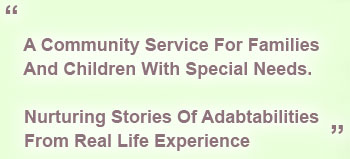|
Reading, Writing and Children’s Literature Children’s picture books may be used as “transitional experiences” (linking two or more events) and offer vicarious learning (natural learning) of almost any human experience, since there are approximately 80,000 picture books in print at any one time. The books combine images and words to help capture the child’s imagination, learn new alternatives to life’s situations, and perhaps reinforce and energize the child’s creative forces. Cinema and DVD movies also use the bridge between images and words in the telling of their stories, however, the plot action often flows so fast that adequate time is not allowed for the processing and integration of the materials. Where all the images are supplied, the child is frequently not forced to create their own. Since movies play a vital role in our societies ability to share and experience diverse stories, we have included links to websites dealing with and offering an index of movies by topics and disabilities. Children’s literature affords both children and adults the opportunity to connect and share time and experiences together. The process if the “right” books are chosen can engage the parent and child in story experiences countering negative experiences associated with an abusive or flawed childhood history. The stories when presented, processed, and shared in the right environment, can effectively desensitize the child against the pains inflicted by harsh realities and offer a more hopeful model and vicarious experience. There are numerous books written on almost any subject, often with specific cultural backgrounds, and for all ages. Many books will go out of print, however, the award winning Caldecott (best picture book of each year) and Newberry (best written story of each year) books will be with us throughout our lifetimes. They can be springboards for discussions with children of all ages. Starting with the safety of the story and its characters, the child can be brought into the story, followed with discussion generalizing to their own life experiences. Other benefits of reading a story to children may be the encouragement of writing their own story through the valuable life enhancing advantages of journaling (the use of a diary, using a diary, and scribing a child’s experience of the day. With the help of the Salt Lake Library, we extend their welcome letter on how children can discover keys to imagination, knowledge and curiosity by visiting their local library. The librarians have compiled a list of some of the best children’s literature representing several clinical themes including such separate mental health topics as attention disorder, anxiety, depression, divorce & single parent, autism, identity. We are including a number of useful articles proclaiming the benefits of teaching literacy to children, with the additional need to teach them a love for the process. . Click on: Short ArticlesIntroduction to the Therapeutic Use of Literature Television vs. Books, a Difficult Parental Decision Bringing Viable Role Models into a Home Healing from Trauma, Assisted by Stories Learning and Using Non-verbal Language through Books Reach Out and Read (Longer Article) Children’s Literature LinksMovies: Childhood Journaling: Scrapbooking: Reading Resources for ChildrenBibliotherapy: Award Winning Books: Children’s Library Resources by Theme: Booklists for Reading Other titles: Story Telling: The Amazon.com
|

Using Children’s Literature







Social Networks
Follow Us